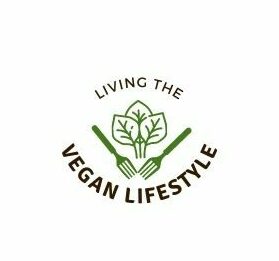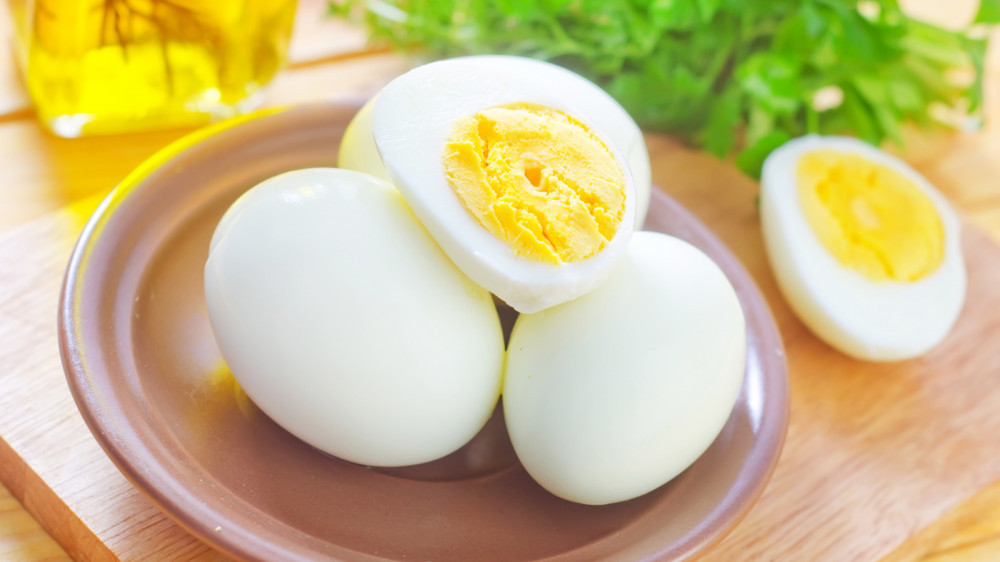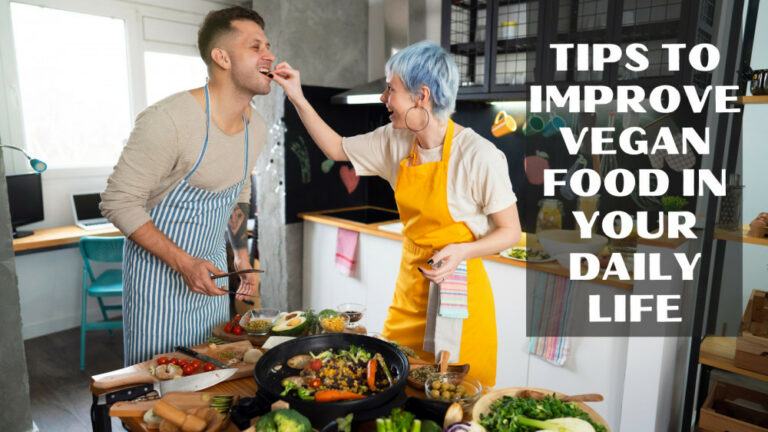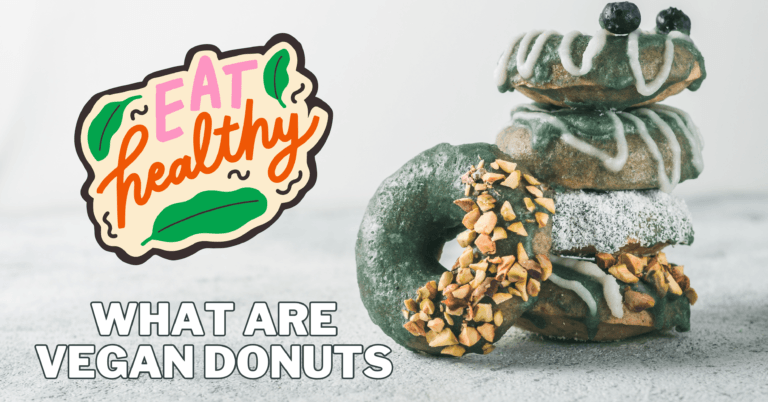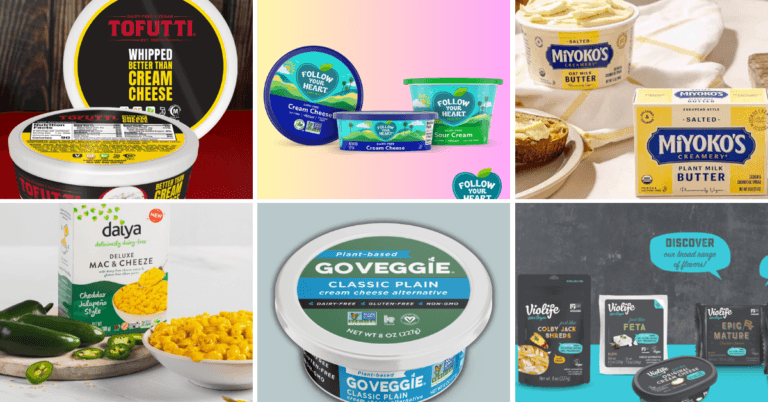Easy Techniques To Introduce An Egg-Free Diet
Easy Techniques To Introduce An Egg-Free Diet
Going egg-free is so simple to accomplish and makes such sense. Eggs may be the most offensive food, even more so than meat. In this article, I'll review the benefits of giving up eggs before examining several excellent egg substitutes.
What Is An Egg-Free Diet?
A way of eating that completely excludes eggs is known as an egg-free diet. You might want to consider eliminating eggs from your meal plan if you or someone in your household has an allergy to eggs or has grown intolerant to them.
Because eggs are hidden in many everyday food products, an egg-free diet is much easier to follow on paper than in practice. Therefore, an egg-free diet requires closely examining all recipes and nutrition information entering your kitchen. Eggs can be easily removed from omelets, quiche, and other brunch recipes, but they can also be found in the following foods:
Prepared Meats
Eggs may be a binder in dishes like lasagna, meatballs, meatloaf, shepherd's pie, chicken pot pie, and breaded meats (like chicken nuggets).
Baked Goods
All baked goods, unless expressly stated otherwise, will contain eggs, including cheesecake, brownies, cupcakes, gluten-free cakes, marshmallows, custard and cream cakes, rhubarb pies, chocolate chip cookies, pancakes, muffins, chocolate fudge cake, birthday cakes, baking mixes, and other pastries (for example, a vegan chocolate cake will be egg-free).
Beverages
Eggs can be an ingredient in milkshakes, coffee drinks (like lattes), protein drinks, wine, and beer. They can also be found in froth or foam.
Condiments
Unless otherwise stated, mayonnaise, creamy salad dressings, and hollandaise sauce contain eggs.
Why Go Egg-Free?
Reduce Cruelty To Chickens
People transitioning to plant-based diets frequently eliminate one animal product at a time, keeping eggs for last. But if you want to eat more humanely, you might want to stop eating eggs immediately. Most eggs sold worldwide are produced by chickens cruelly kept in little wire cages. They cannot spread their wings since they are perched on this wire and sleeping there.
Hens need roughly 30 hours to produce each egg, given that they lay about 250 eggs yearly. That's a lot of time spent working in miserable conditions to make such meagre amounts of food. Therefore, it is difficult to argue that dairy or meat products are less cruel to eat than eggs from caged hens.
Even farms that produce free-range eggs use unethical farming methods. Many purchase their chickens from hatcheries where undesired male chicks are ground alive. And once egg yields fall to unprofitable levels, all egg farms—cage-free or not—kill their chickens by the barnful.
They refer to “depopulating” their barns as a result of this massive killing. On egg farms, hens never pass away from old age. Despite what the business would have you believe, eggs are not particularly healthy food.
Better For Your Health
- Eggs contain high amounts of bad cholesterol, which may cause heart disease and stroke.
- A study found that men who eat eggs are more like to develop prostate cancer or a recurrence. Eggs contain choline which increases inflammation in our bodies.
- Some commercial egg farms treat their hens with antibiotics even if they are not sick. When we eat eggs, we ingest these antibiotics and develop antibiotic resistance.
- Every year people get sick from salmonella-contaminated eggs. This illness can be deadly for young children and older people.
- Eggs feed viruses and bacteria. The eggs we eat feed the bacteria, viruses and pathogens in our liver.
- In some cases, flu viruses are grown in chicken eggs.
Protects The Environment
We know the negative impact on the environment red meat has. Well, egg production farms are also vital in soil and water contamination. Therefore, we help the environment by avoiding eggs and egg-byproducts.
Nutrients In Eggs Are Available In Plant-Based Products
They lack fiber yet are pretty high in saturated fat. Protein and iron, two minerals rich in eggs, are widely available in other foods. So it makes perfect sense to avoid eggs in your diet. Eliminating eggs is simple. Let's investigate how to make the change.
How To Drop Eggs From Your Diet
Since eggs are present in many baked items, including pancakes, muffins, cakes, pies, and mayonnaise, it may be challenging to avoid them. Eggs are surprisingly simple to avoid, even though they are widely available.
There are only two justifications for using eggs:
- The first is in dishes like scrambled eggs, omelets, and shuffles, where eggs are the primary ingredient.
- The second use of eggs is for glazing, moistening, or binding in relatively modest amounts.
As we'll see in a moment, both scenarios have excellent alternatives.
How To Start An Egg-Free Diet
It can take some getting used to eating a diet without eggs, whether it's due to an allergy, an intolerance, or just dietary or taste preferences. Follow these recommendations to help with the transition:
Discover Egg-Free Recipes
In many recipes, eggs bind, glaze, thicken, quicken, stabilize, and raise the ingredients. Fortunately, many eggless alternatives exist that work like eggs.
Unfortunately, many packaged, powdered egg substitutes contain subpar ingredients that may be very high in carbohydrates (like potato starch or tapioca) or ingredients that may cause inflammation (like those made from soy or soya beans).
Study Every Dietary Label
Most items with “egg” listed as an ingredient are whole eggs, so those who are intolerant to egg (yolk or white) should steer clear of them. Eggs must be listed as an allergen in bold in the EU, which makes it a little bit simpler to scan the supermarkets.
Learn Various Names for Eggs: Avoid foods that contain albumin, globulin, lecithin, lysozyme, ovalbumin, and ovovitellin when reading food labels because these ingredients may contain egg proteins. Additionally, watch out for any unidentified ingredient that starts with the Latin word for egg, “ovo.”
Don't Confuse Dairy-Free With Egg-Free
It's a common misconception that all foods free of dairy also exclude eggs. Despite what many people think, eggs are not a dairy product. This indicates that many items are marketed as dairy-free but contain ingredients from eggs.
To be safe to eat on an egg-free diet, a product must not contain eggs, meat, or dairy to carry the vegan label.
Prefer Actual Food
Natural foods are one of the best ways to ensure you know what you are consuming. These are foods that you know exactly where they came from, they are fresh, natural, and unprocessed. It's best to avoid buying something if you can't pronounce or recognize something on the label when you're shopping. Knowing exactly what goes into your food is made more accessible by making egg-free recipes from scratch with natural food ingredients.
Eggs Can Be Replaced With Other Nutrients
Health-promoting nutrients like protein, fat, calcium, vitamins and omega-3 fatty acids are abundant in eggs. Thankfully, all these nutrients are simple to replace when leading an egg-free lifestyle.
The nutrients in eggs can easily be replaced by a natural food diet that includes meat, fish, vegetables, healthy fats, and dairy (if tolerated).
Replacing Eggs When Baking At Home
Some box mixes or recipes only call for one egg; in those cases, customers can omit it without changing the recipe in any other way. Pancake mix in a package is one illustration.
You should follow the instructions as they usually would and omit the egg after reading the box to confirm that it is egg-free; for most premixes, the outcome will be nearly identical. Don't overmix the batter to improve the rise and keep the final product's structure. Customers should only stir it just enough to mix the ingredients. Small lumps may still be present.
This prevents the gluten-containing wheat protein from being overextended before heating. The gluten itself takes over the role of the egg.
1. Neutral Flavoured Oil
Add one-half tablespoon of canola oil (or another oil with a neutral flavour) for each egg to the batter with the wet ingredients if the final product's moisture level is too moist.
2. Gluten Or Starches
While white or refined flour is easier to work with, whole-grain flours are more nutrient-dense and should be used by those new to egg-free baking.
3. Mashed Bananas Or Other Puréed Fruit
Another preferred alternative to eggs is mashed bananas. The only drawback to using bananas in baking is the possibility of a slight banana flavour in the final product. Other puréed fruits, such as pumpkin and avocado, also work and might not have as much of an impact on the flavour.
You can substitute ¼ cup (65 grams) of fruit purée for each egg, regardless of the fruit you decide to use.
Puréed fruit-based baked goods won't likely brown as profoundly, but they will be incredibly moist and dense. The best recipes for this substitution are quick bread, muffins, cakes, and brownies.
4. Spoon In Applesauce
Applesauce is another wholesome alternative that can take the place of an egg and add texture. Applesauce can be used in place of one egg in a quarter cup. The best recipes for using applesauce are those where the flavour isn't overly delicate, and the structure doesn't need much support.
Examples of such recipes include cookies and brownies. The finished product will be moist and airy with a faint apple flavour. Along with the other wet ingredients, applesauce is added.
5. Consider Flaxseeds
Flaxseeds are a great egg substitute because they are packed with nutrients and contain many omega-3 fatty acids. Customers can purchase them whole or ground, then freeze them. One tablespoon of ground flaxseeds and three tablespoons of water should be combined with a fork or whisk before being used in recipes.
The mixture will transform into gelatin, with a consistency resembling egg whites. In many recipes, the fat and protein in flaxseeds can substitute for eggs' texture and structural function; however, flaxseeds give food a grainy or nutty flavour. Therefore, bran muffins, oatmeal cookies, and sturdy cakes are among the recipes in that flaxseeds work best.
Regarding egg substitutes currently on the market, flaxseeds frequently generate the most interest. There are many tales of cookies that rise and resemble egg-based recipes. In addition to some Asian markets, health food stores carry flaxseeds. You can also get them on Amazon or other online stores. We usually purchase whole flaxseeds. Keeping them whole and grinding them when necessary to avoid rancidity is best.
6. Sprinkle Chia Seeds
Chia seeds are a plant-based source of omega-3 fatty acids and adequate egg substitutes for binding, much like flaxseeds are. First, grind the whole seeds in a spice grinder to replace one egg. Then add one tablespoon of chia seed meal to three tablespoons of water. This mixture must also sit for around 20 minutes, like a flaxseed egg replacer.
It will become more gelatinous than flax. Chia works best in whole-grain or healthier baked goods like oatmeal cookies and quick bread. Chia seeds can also be added to sauces and gravies that need to thicken. When selecting an egg substitute, we should remember that chia has a milder flavour than flax but a darker colour.
7. Aquafaba
The egg above substitutes will work well for most egg-required recipes, but not when making meringue pies and macaroons. The egg is not just a structural component in these delicacies; it is the structure itself. However, replacing eggs has gained popularity, so those who avoid eggs can now enjoy these egg-based desserts.
But only an engineer could determine what would function: For the most challenging recipes, like meringue and macaroons, the discarded water from canned chickpeas works fantastically as an egg substitute. 4 He called it aquafaba, Latin for “water and bean.” The starch and protein in the water combine to resemble egg whites.
8. Commercial Egg Replacers
A few businesses produce powdered egg-replacer products that can be used in place of eggs in many baking recipes. These products typically contain potato starch, tapioca, soy flour, and leavening agents. These products assist in replacing the binding and structural elements of eggs and are most frequently added to water before being added to the wet ingredients.
Ener-G Egg Replacer and Bob's Red Mill Vegetarian Egg Replacer are two well-established brands in this market. Although they aren't whole foods and don't add any healthy nutrients, these products were created to replace eggs because they are shelf stable easily. They have no flavour, and their application is simple. These products and others like them might be the solution for someone looking for an easy way to replace eggs.
This is not an option in our cooking and baking because it is a processed product, but I thought I mentioned it anyway.
9. Tofu Scramble
Don't worry if you miss your morning omelet or scrambled eggs; there are a few delectable and wholesome egg-free alternatives you may try in their place. Protein-rich tofu scrambles can be spiced to have an egg-like flavour.
Extra-firm tofu should be crumbled and cooked in a pan with olive oil, salt, pepper, turmeric powder, and any other seasonings you like (such as spinach, mushrooms, and vegan shredded cheese). Adding turmeric powder gives the dish an earthy flavour and somewhat yellow egg-like colour. It also offers additional anti-inflammatory benefits.
10. Chickpea Flour Omelet
An omelet with a texture and protein content identical to eggs can be made with chickpea flour. The basic recipe for making chickpea flour omelets is to combine one part chickpea flour with one part water or milk and season to taste. The batter should then be cooked in a pan like an omelet.
11. Nut Butter
In most recipes, nut butter like almond, cashew, or peanut butter can also be used in place of eggs.
Use three tablespoons (60 grams) of nut butter in place of one egg.
This is best used in cookies, brownies, and pancakes but may change the flavour of your final product.
To ensure everything blends properly, use creamy nut butter rather than chunky varieties.
12. Agar-Agar
Agar-agar, is a great vegan substitute. It is made from a particular kind of seaweed or algae. Agar-agar is available online or in most supermarkets and health food stores as an unflavoured powder.
Replace 1 egg with 1 tablespoon (15 grams) of water and 1 tablespoon (9 grams) of agar-agar powder. The flavour of your finished product shouldn't be affected by this substitution, but the texture might become stiffer.
13. Soy Lecithin
A byproduct of soybean oil, soy lecithin has binding abilities akin to those of eggs. Due to its capacity to combine and bind ingredients, it is frequently added to commercially prepared foods. But if you are allergic to soy, you should avoid this. Additionally, most health food stores and websites sell it in powder form.
Your recipe can use 1 tablespoon (14 grams) of soy lecithin powder instead of 1 egg.
What Is An Allergy To Eggs?
One of the more prevalent food allergies in kids is an allergy to eggs. As they get older, it usually gets better, and by the time they're adults, it's usually fixed. If the allergy doesn't go away by 16, it's likely to last a lifetime.
The body releases histamines in response to an allergic reaction to eggs, which can cause symptoms like eczema, hives, runny nose, itchy eyes, and even swelling. Fortunately, anaphylaxis from severe egg allergies is extremely rare. You are more likely allergic than intolerant if these symptoms are similar to what you experience after eating eggs.
What Sets An Egg Allergy Apart From An Egg Intolerance?
There are various types of egg intolerance. Some people only have an allergy to the white or the yolk, while others have an allergy to both. While some people must avoid all egg-based ingredients, others can tolerate baked goods because they are only allergic to the proteins in raw eggs.
Once you are sure that eggs are the source of your symptoms, you can begin eliminating eggs from your diet, regardless of which egg protein is to blame.
You shouldn't ignore it if you believe eating eggs causes adverse effects on your body. Make sure to tell your doctor so they can use a combination of blood tests, skin prick tests, and dietary elimination tests to determine the severity of your reaction.
Conclusion
Omega-3 fatty acids, protein, vitamins, and minerals are all abundant in eggs. It is best to avoid eating eggs altogether if you have an allergy to them or intolerance to them.
Eggs can be concealed in various foods, including meatballs and wine. However, you can switch to an egg-free eating regimen if you carefully read labels, adhere to a real-foods, ancestrally inspired diet, learn to cook with natural eggless substitutes and restock your kitchen with eggless goods.
I trust you enjoyed this article about the Easy Techniques To Introduce An Egg-Free Diet. Please stay tuned for more blog posts to come shortly. Take care!
JeannetteZ
>>>Want To Learn How To Create Delicious, Cruelty-Free, Healthy AND 100% Vegan Meals? Try These Awesome Vegan Cooking Courses With A Free 7-DAY MEMBERSHIP<<<
Your Opinion Is Important To Me
Ideas? Thoughts? Questions? I would love to hear from you. Would you please leave me your questions, experience, and remarks about this article on the Easy Techniques To Introduce An Egg-Free Diet, in the comments section below? You can also reach me by email at Jeannette@LivingTheVeganLifestyle.org.
Disclosure
This post may contain affiliate links. I earn from qualifying purchases as an Amazon Associate and other affiliate programs. Read my full disclosure.
Here are links to some of my favourite articles:
9 Delicious Vegan Mango Dessert Recipes For Your Kids
7 Lemongrass-Flavoured Vegan Recipes For Your Kids
6 Best Vegan Meyer Lemon Recipes For Your Kids
8 Delicious Vegan Hearts Of Palm Calamari Recipes For Your Kids
